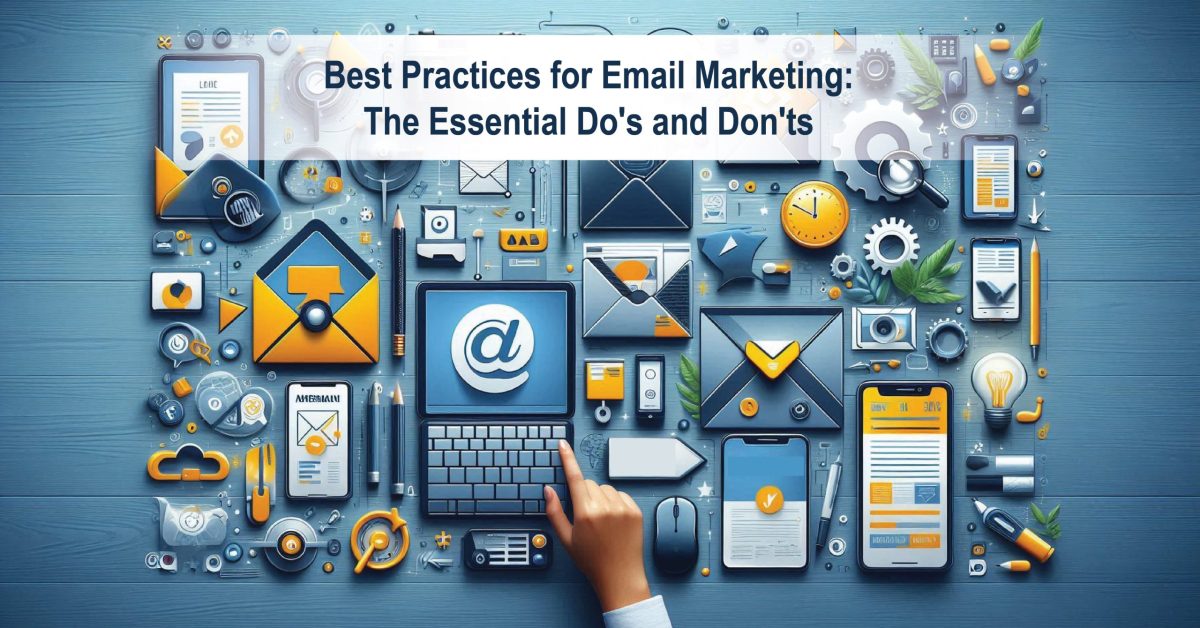In the digital era, email marketing continues to be one of the most effective means through which businesses can reach their target audience. Nevertheless, a successful email marketing campaign is not just about sending out some emails. It involves developing relationships, giving worth and making sure that your messages are timely and relevant. In this editorial, we will look into what to and what not to do in case you want such emails that will touch those who read it at all levels.
Email Marketing Dos
Create a Quality Email List
Before sending any emails, ensure you have a well-curated list of subscribers who have willingly opted in to receive communications from you. This not only ensures compliance with data protection laws like GDPR but also increases the likelihood that your emails will be well received. Use sign-up forms on your website, social media, and in-store (if applicable) to gather subscribers.
Do Personalize Your Emails
It is very important to have well-selected list members who willingly agreed to receive communication from you via email before sending out emails. In doing so you are not just abiding by GDPR or any other data protection regulations but improving overall reception of your mails as well. Acquire subscribers through signing up forms found at store premises (if existent), website or any social media platform available for this purpose. Get subscribers through sign-up forms in store premises (if applicable), website as well as social media platforms.
Split Your Audience into Segments
All subscribers are not equal; hence they should not receive similar emails. Demographic features, buying history and how active an individual is on your site are some of the ways you can use to segment your audience. Engage better through sending relevant periodic targeted content that hopefully won’t bore them or make them unsubscribe from your list.
Optimize for Mobile Devices
More than half of all email opens occur on mobile devices, making it essential that your emails are mobile-friendly. To achieve this, use responsive design, be concise in your contents and make sure that the call-to-action buttons in your email are easy to tap. The state-of-the-art technology has made it even easier for people to access online information at any time and place thereby making their lives more convenient especially when they want to read about latest news or discuss hot topics with friends on social media platforms.
Test Your Emails A/B style
Experimenting with various subject lines, email copy and send times will enable you discover what works best for your clients is among other things achieved using A/B testing method. Just test one variable at a time before deploying new strategies based on the results.
Email Marketing Don’ts
Don’t Send Spam Messages to Subscribers
It is important to note that sending a lot of mails can overwhelm the recipients and even make them unsubscribe. You should not flood their inbox with emails, as well. Also, it is advisable to avoid sending irrelevant messages or repetitive information which might reduce the perceived value of your emails.
Exercise Caution on Your Subject Lines
First impression counts as far as subject line is concerned. Avoid the use of clickbait or language that overly promotes, because it creates mistrust and decline in open rates. Instead, go for concise, clear and captivating subject lines that perfectly represent the email content.
Do not forget to include a clear call to action
Every mail must have a goal which might include driving traffic to your site, encouraging purchase or promoting an event. Make sure your call-to-action (CTA) is noticeable and very easy to understand. Never put many CTAs into one email since this may confuse reading publics.
Email Analytics Cannot Be Ignored
For an understanding of how effective your emails are performing, review your analytics regularly. You should be looking at metrics such as open rates, click-through rates, conversion rates and unsubscribe rates. Use these data points to fine-tune your approach and address any problems like low engagement or too many people unsubscribing.
Do Not Forget Legal Obligations!
Ensure that your emails comply with applicable laws and regulations such as the CAN-SPAM Act in US or GDPR in EU. This means always giving subscribers a clear way to opt out of future emails and including your company’s physical address in the footer. Violation may result in huge fines and it can also ruin your reputation.
Conclusion
Email marketing is a powerful tool for building relationships and driving business success, but it requires careful planning and execution. By following these do’s and don’ts, you can create email campaigns that not only reach your audience but also resonate with them. Remember, the key is to provide value, respect your subscribers, and continuously optimize your approach based on feedback and data.
